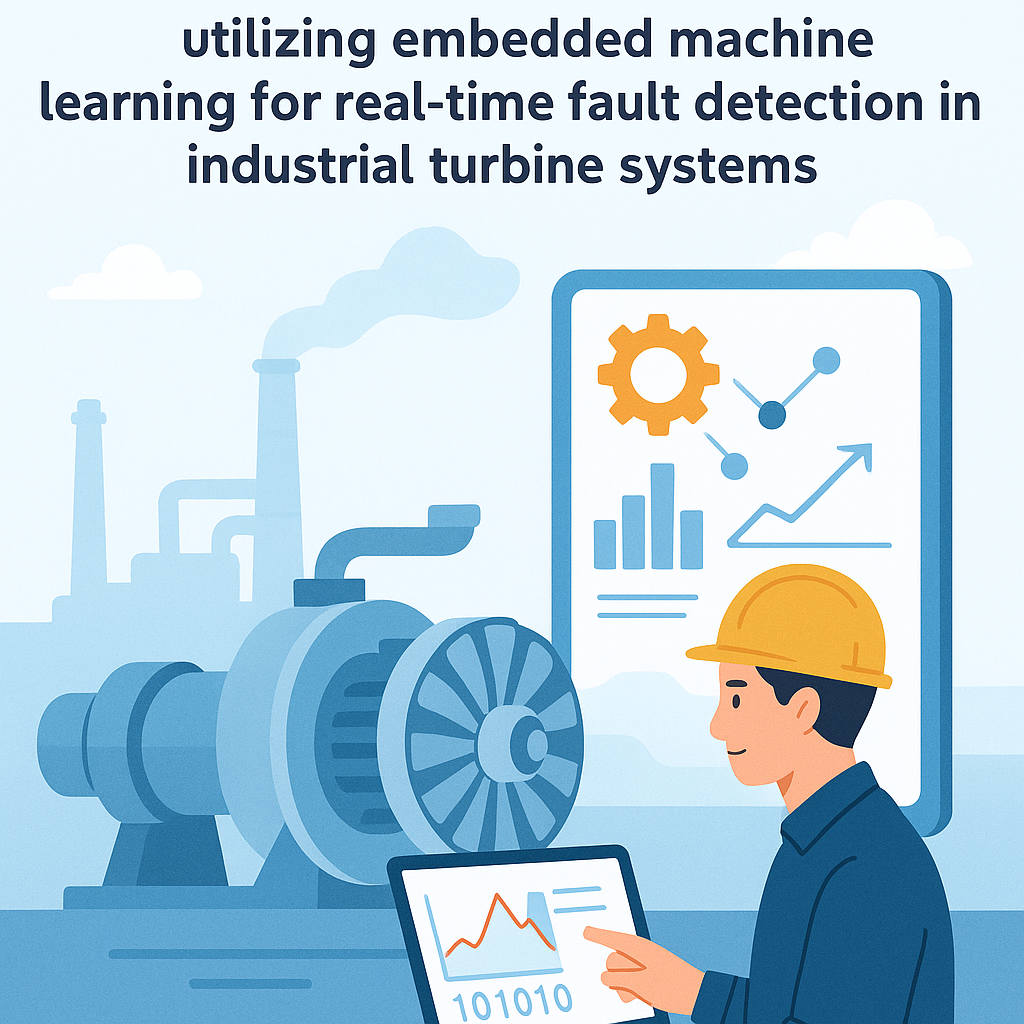Introduction
In the rapidly evolving landscape of industrial technology, the need for efficient maintenance strategies has become increasingly critical. The launch of a predictive maintenance platform that utilizes embedded machine learning for real-time fault detection in industrial turbine systems marks a significant advancement in this field. This innovative solution not only enhances the reliability of turbine operations but also minimizes downtime and maintenance costs. In this blog post, we will explore the key features, benefits, and implications of this groundbreaking platform.
What is Predictive Maintenance?
Predictive maintenance is a proactive approach that involves using data analysis and machine learning to predict when equipment will fail. This allows organizations to perform maintenance at the optimal time, thereby reducing unplanned outages and extending the life of their assets. The integration of embedded machine learning capabilities into predictive maintenance platforms significantly enhances their effectiveness.
Key Components of the Predictive Maintenance Platform
- Embedded Machine Learning: The platform incorporates machine learning algorithms directly into the turbine systems. This allows for real-time data processing and analysis, enabling immediate fault detection.
- Data Acquisition: Sensors are installed on turbines to collect various performance metrics, such as temperature, vibration, and pressure. This data is crucial for predictive analytics.
- Real-Time Monitoring: The platform continuously monitors turbine performance, providing operators with instant alerts for any anomalies.
- Dashboard Interface: Users can access a user-friendly dashboard that displays real-time data, predictive insights, and maintenance recommendations.
Benefits of the New Platform
The implementation of this predictive maintenance platform offers numerous advantages:
- Reduced Downtime: By identifying potential failures before they occur, the platform allows for timely maintenance, thus reducing unplanned downtime.
- Cost Efficiency: Predictive maintenance minimizes unnecessary maintenance activities and associated costs, leading to significant savings for organizations.
- Increased Reliability: Enhanced fault detection improves the overall reliability of turbine systems, ensuring consistent performance and operational efficiency.
- Data-Driven Decisions: The insights derived from data analysis empower organizations to make informed decisions regarding maintenance schedules and resource allocation.
How Embedded Machine Learning Works
Embedded machine learning integrates artificial intelligence directly into the hardware of turbine systems. This allows for:
- On-Device Processing: Data is processed locally, reducing latency and enabling real-time analytics without reliance on cloud computing.
- Continuous Learning: The system adapts and improves over time by learning from historical data and operational patterns.
- Predictive Analytics: By recognizing patterns in data, the platform can forecast potential failures and suggest preventive measures.
Real-Time Fault Detection
Real-time fault detection is one of the standout features of this predictive maintenance platform. Here’s how it enhances turbine system management:
- Immediate Alerts: Operators receive instant notifications of any detected anomalies, allowing for quick intervention.
- Improved Safety: By detecting faults early, the platform helps prevent accidents and ensures a safer working environment.
- Enhanced Performance Monitoring: Continuous monitoring helps maintain optimal turbine performance and efficiency.
Implementation Challenges
While the benefits of the predictive maintenance platform are clear, there are challenges associated with its implementation:
- Integration with Existing Systems: Organizations may face hurdles when integrating the new platform with their current systems and processes.
- Data Management: Handling large volumes of data from sensors can be complex and requires robust data management strategies.
- Training and Support: Effective training programs are essential for operators to maximize the platform’s capabilities and ensure successful adoption.
Future Implications
The launch of this predictive maintenance platform heralds a new era for industrial turbine systems. As organizations adopt these innovative technologies, we can expect:
- Wider Adoption of AI in Industry: The success of this platform may encourage other industries to explore AI-driven solutions for equipment management.
- Increased Sustainability: By optimizing maintenance and reducing waste, organizations can contribute to more sustainable operational practices.
- Continuous Innovation: The platform is likely to evolve with advancements in machine learning, leading to even more sophisticated fault detection capabilities.
Conclusion
The launch of a predictive maintenance platform utilizing embedded machine learning for real-time fault detection in industrial turbine systems represents a major leap forward in maintenance strategy. By leveraging advanced technology, organizations can enhance the reliability and efficiency of their equipment while minimizing costs and downtime. As the industry continues to embrace digital transformation, the potential for predictive maintenance to revolutionize operational practices is immense. Embracing these innovations will be key for organizations aiming to stay competitive in a rapidly changing market.



